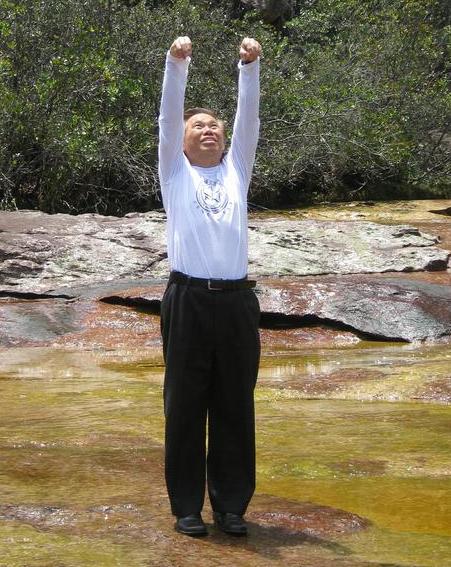MARTIAL BENEFITS OF EIGHTEEN-LOHAN ART

Do you know of the martial function of Worshipping Buddha?
Question
What are the general and particular martial benefits of patterns from The Eighteen-Lohan Art, and what is the best way for a Shaolin Kung Fu practitioner to integrate the practice into his/her daily routine, assuming a force training method like Golden Bridge is already practiced?
Sifu Andy Cusick
Answer
It was precisely for better martial performance that the Eighteen Lohan Hands called Shi Ba Luo Han Sou, gradually evolved into the Eighteen-Lohan Art, called Shi Ba Luo Han Gong.
Bodhidharma first taught the Eighteen Lohan Hands to the Shaolin monks to strengthen them physically, emotionally, mentally and spiritually so as to better attain Enlightenment.
Later, over a period of centuries, the exercises in the Eighteen Lohan Hands were gradually modified by martial monks, many of whom were generals before, to suit their martial background.
Relatively speaking, the Eighteen Lohan Hands were more for developing and maintaining health, whereas the Eighteen-Lohan Art was more for developing internal force for martial purposes. This did not mean that the Eigheen Lohan Hands were not helpful to martial artists, or the Eighteen-Lohan Art not contributing to health. The difference of benefits between the two arts was that of emphasis and not of nature.
In general, the martial benefits of the Eighteen-Lohan Art can be classified into three groups. Patterns 1 to 6 are excellent for developing internal force, Patterns 7 to 12 for exploding force, and Patterns 13 to 18 for balance and agility. Again the classification is relative. Patterns 1 to 6, for example, are also helpful for exploding force and developing balance and agility, but if all other factors were equal, they are most cost-effective for developing internal force.
Apart from these holistic benefits, each pattern in the Eighteen-Lohan Art may be used for some particular combat situations. If an opponent grips both your hands, for example, you may release the grip and attack his throat by using the first pattern, "Lohan Worships Buddha". In the hands of a master, "Old Monk Grinds Rice" found in Pattern 8 can be used to counter any attacks! The last pattern, "Swallow Flies through Clouds", has many sophisticated combat applications, like simultaneously striking an opponent while he attempts to attack your lower body.
There are numerous ways to practice the Eighteem-Lohan Art to derive its best result. Which would be the best way depends on some factors, like a practitioner's developmental stage, his needs and aspirations. Moreover, as there are 18 patterns in the art, there are also numerous ways to train them, like only one pattern per session, some of the patterns or all the patterns.
Most schools today as well as in the past do not have many force training methods to choose from. Hence, they have to practice the Eighteen-Lohan Art everyday, and they usually practice all the patterns because the force they derive from the art is not very powerful.
But we in Shaolin Wahnam are very special. Other people will find it hard to believe and often accuse us of being boastful, but it is true that we can develop more internal force by practicing one pattern for 10 minutes than most other students by practicing all the patterns for one hour! Thus, we do not have to practice all the patterns in one training session; we practice just one or some patterns. Once a while we may practice all the patterns for review. Moreover, not only we have a wide choice of force training methods, we actually derive more benefits by practice different methods.
Hence, for a typical Shaolin Wahnam student who intends to use Eighteen-Lohan Art as his main force training method, he would get the best results by training the following way. His daily force training session is about 15 to 50 minutes. He should train one, two or three patterns from the Eighteen-Lohan Art about 6 or 7 out of 10 training sessions. For the remain 3 or 4 training sessions, he can train any other force-training methods, like Golden Bridge, One-Finger Shooting Zen or Triple Stretch. Generally he uses one force training method for one training session, but sometimes he may use two or even three different methods for the same session.
In this way he benefits most from accumulated effect as well as spread and depth. But the most important is that he follows the three golden rules of training, namely don't worry, don't intellectualize, and enjoy the practice.
The above question-answer is reproduced from the thread 10 Questions to Grandmaster Wong on Bone Marrow Cleansing and Eighteen-Lohan Art in the Shaolin Wahnam Discussion Forum

Double Hooks Hanging on Wall is a very powerful force-training exercise
LINKS
